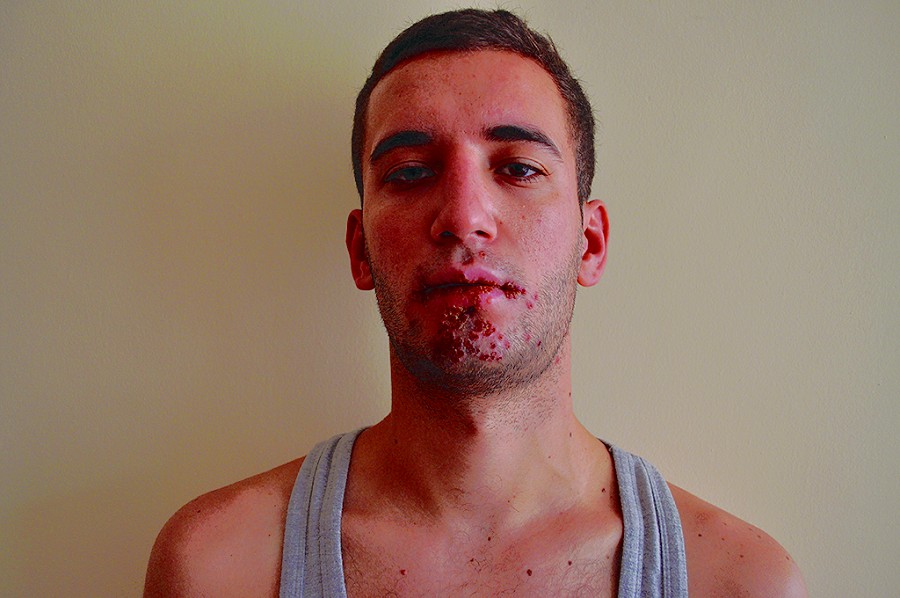Image
Video
Ahmet Kavas
He was born in Denizli in 1989. He graduated from Muğla University, Department of Fine Arts Education, and Division of Art Education in 2006-2010. He received in 2014 his MFA Hacettepe University Faculty of Fine Arts, Department of Painting with a thesis about Construction of Homosexual Simulacrum by consultant Prof. Necla Rüzgar. In 2012 he went to Usti Nad Labem in Czech Republic by Erasmus Programme and received Studio and Workshop-Performance in Jan Evangelista Purkyne University Faculty of Art and Design by Prof. Juri Kovanda. Now he is studying in MFA Public Art and New Artistic Strategies in Bauhaus University in Weimar/Germany.
Exhibitions:2015 “Don’t Bother, Don’t Border” Performance, Imaginary Bauhaus Museum goes Gorki, Gorki Theatre, Berlin Germany / 2012 “The Impossible Gallery” The Real Bads, Galeri Kara, Ankara Turkey / 2012 “Neither Fish nor Fowl” Performance, Galerie Emila Filly, Usti nad Labem Czech Republic / 2011 “Mustafa Ayaz Museum and The Foundation of Plastic Arts Centre,1. Painting Competition for Youngs” Exhibition-Mustafa Ayaz Museum, Ankara Turkey
Image title
Artisickness, Digital Print,(C-Print), 30 x 42,5 cm, 2015
A very high fever followed the flu I caught and caused many wounds which appeared around my mouth and chin. These wounds which covered on nearly the half of my mouth triggered me to be seen as “other” in public. While I was on my own way on the street, I could see the glances of people which were telling a disgusting, irritated, and uncomfortable feeling. I made the wounds permanent by taking myself. The noticeable of my wounds by society, made the problem which called as “otherness” a current issue in terms of me.
Video title
Purification, 2’22, 2014
People carry out numerous activities related to vital necessities and daily works. The greater part of these activities repetitiously persists within fluidity of time without creating any awareness. The control and the responsibility of our individual activities belong to us. Together with this, we don’t need to explain these individual activities someone, for instance neither our way of drinking the water nor our way of sitting on a closet which is actually the part of our daily life. Also no one is exactly interested in to these private activities, because these are ordinary activities. The video “purification” base on exactly this reality. Sexual tendency of individuals and also the practicing and perception of this tendency are exactly related to individual life of person. Although sexuality is an ordinary part of life, it has been key determinant factor in the formation of ethical values, together with begin of monotheistic religion, because religion has returned to a tool which gets under control to people. And religion has converted sexuality to an activity which should be abstained.

Statement
My first artistic impulse which begun at a rural region of Anatolia were mostly like experimental works which can be also called as perceiving the objects. These impulses gained meaning and identity by art theory, art language and methods with my art education.
In many cultures the borders of the society is defined by the governments and to be the “other” is one of the problems that many of the people who try to live within these borders are facing. This kind of border has always been feeding the prejudices.
Breaking of prejudices has been possible via art throughout the history. But the process which produces new prejudices based on new social events is still going on.
The society, in which we live, enjoys categorizing its members according to their sex, race and religion and canalizing these people to behave in a manner that this categorization requires. As an example for this is the manner and approach which are evolved against to homosexuals, refugees, freaks, poor. This approach still pushes those people to a point that stated as “abnormal” or “other”. Also since the beginning of monotheistic religions we see that alienation of the people due to their religious choices is still readable in different societies.
I prefer in my works criticizing such realities that I mentioned, through an ironic or sometimes narrative approach. I believe that the artist should have a role that will bring to light such pathological approaches of the community in which he/she lives.
Ahmet Kavas
